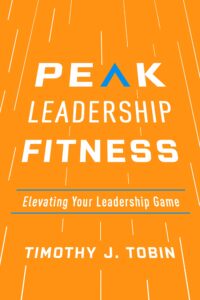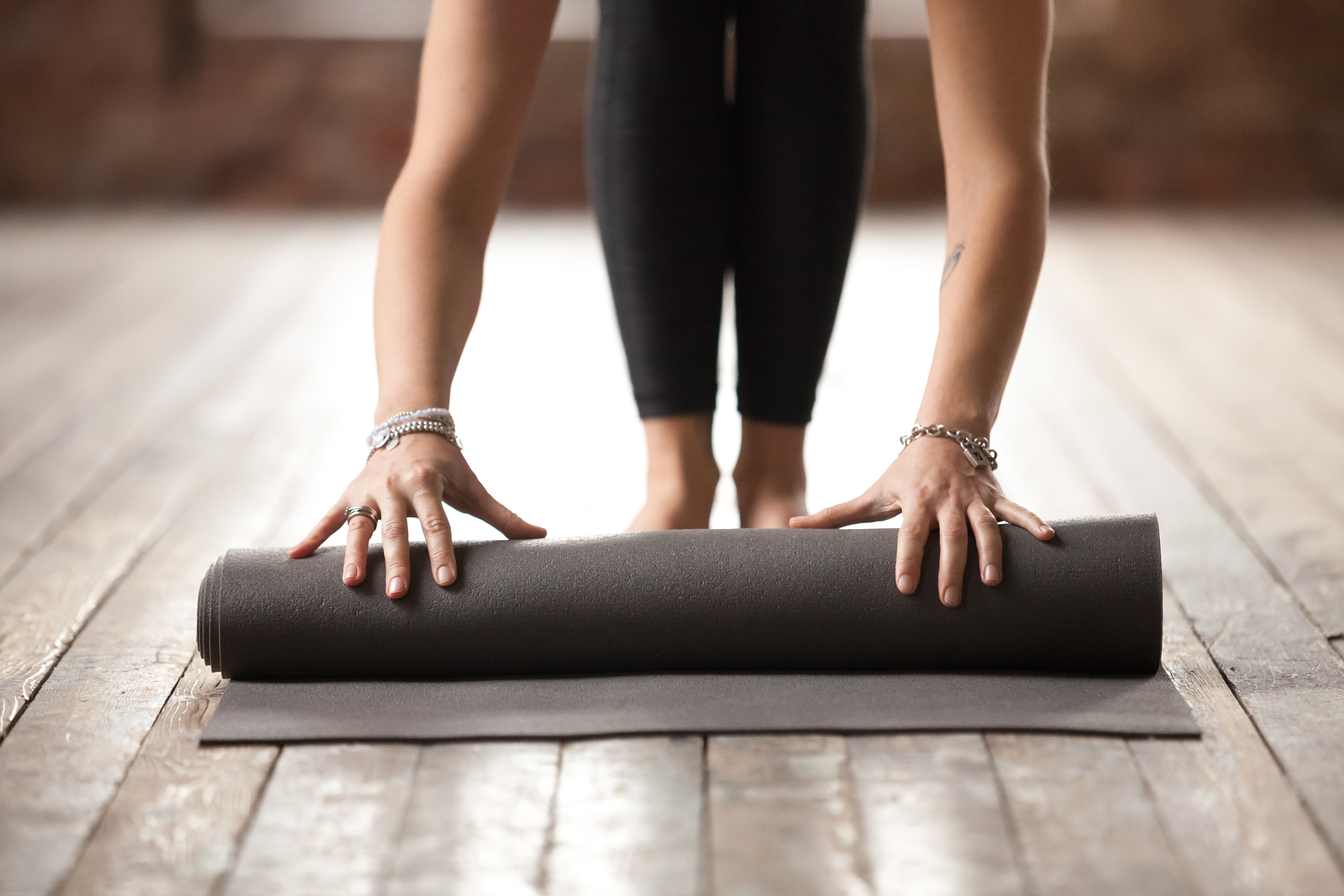Elevate Your Leadership Game
There are many parallels between physical fitness and leadership fitness. Both are journey’s into self-discovery. They require you to set goals, persevere amidst obstacles and follow a game plan. They also require commitment, passion, initiative and self-awareness. Both have the potential to inspire others, and your best results only come with effort. An important distinction is that the stakes are much higher with leadership.
I recently read Peak Leadership Fitness: Elevating Your Leadership Game by leadership coach and fitness expert Timothy J. Tobin. I spoke to him about the intersection of leadership fitness and physical fitness.
What is peak leadership fitness?
Peak leadership fitness is about being the best leader you can be. It is aspirational and involves continuously working towards elevated interpersonal and technical skills, adaptability and growth through learning, and delivering consistently positive results. Becoming leadership fit requires strong, accurate self-awareness, frequent and ongoing personal improvement, physical energy, emotional connection, and mental toughness.
Conduct a Readiness Assessment
Before a physical regimen, doctors recommend a series of tests to determine your readiness. How do leaders conduct a readiness assessment?
Just as you shouldn’t begin a physical fitness regimen without consulting a physician, you should similarly not engage your leadership fitness without an assessment. Otherwise, how would you know what to focus your development on? The most common assessment types are self-assessments, performance reviews, simulations, and multi-rater (360) assessments. Each option has pros and cons, but the option with the best overall impact is a 360 assessment. Since leadership by its nature is subjective, it is critical to understand how you are showing up in the eyes of those around you.
Establish Your Leadership Mindset
How do you go about establishing your leadership mindset?
There has been much recent focus on mindset, most notably from Carol Dweck. A leadership mindset impacts how you approach tasks, shapes your interactions with those you lead, drives how you approach learning and growth, and ultimately affects your success and the success of those you lead. There are three important components of a leadership mindset: mindfulness, task-orientation, and performance focus. The basis for mindfulness is self-awareness. Task orientation addresses how you approach challenges. And performance focus emphasizes continuous improvement.
Develop Your Core
Developing your core is a part of most fitness regimens, so I was not surprised to see you talk about a leadership core. What is it? How do you develop it?
Your leadership core is your foundational knowledge that begins with your technical skills. To what extent are you a subject matter expert in a specific domain – whether it be sales, operations, marketing, accounting, HR or other? This level of knowledge is often the gateway to leadership. Once you demonstrate a high level of competence in your domain, you may be given additional leadership responsibilities. Then, as your core evolves, you need to stay current in your domain and expand your leadership knowledge.
 Your leadership core also includes knowledge about your company including the strategy, products/services and how your role connects and supports each. Additionally, you need to strengthen your knowledge about the industry your company is in, as well as competitors. The highest-level core leadership capability involves having a depth of business knowledge across industries. This is fertile ground for honing problem solving and innovation capabilities.
Your leadership core also includes knowledge about your company including the strategy, products/services and how your role connects and supports each. Additionally, you need to strengthen your knowledge about the industry your company is in, as well as competitors. The highest-level core leadership capability involves having a depth of business knowledge across industries. This is fertile ground for honing problem solving and innovation capabilities.
There are a variety of low-cost, high-impact ways to develop your leadership core. Many of these approaches have ancillary benefits such as relationship building, communication, boundary spanning, diversity and inclusion, problem solving, and decision making.
For your domain, become an active member of your professional association. Read their periodic newsletters and research briefs. If you’re a more seasoned leader, look for opportunities to teach others – whether by speaking or writing.
For your leadership core, there are a number of great podcasts and blogs to subscribe to. Additionally, commit to reading at least two business and leadership books per year. Seek out a mentor.
To build your core around understanding your business, check in with a colleague from another department to learn more about what they are working on. Read and stay updated with the corporate strategy and objectives. Have a clear understanding of where the company is going, how it is doing throughout the year, and how your role (and your team’s role) contributes to the overall success of the company.
How to Build Endurance
You start your book talking about a 10K and struggling to finish. That race helped fuel a change in your physical fitness. How do leaders build endurance?
It’s amazing what you can learn about yourself when things don’t go as well as you hoped or planned. One of the things I learned in that 10K experience carries over into leadership: preparation matters. You cannot simply show up and expect optimal results.
When it comes to building endurance within leaders, there are two considerations. First, leaders must have an outlet to process information and a way to re-energize. There are many approaches including yoga, meditating, painting, a variety of physical fitness options and other hobbies. What is most important is that you find one that resonates and that you will stick with.
This leads right into the second point, and that is how adults learn. Put simply, we learn by combining baseline information (or an existing point of view) with action, feedback, and reflection. With our fast-paced environments and results orientation, most executives I’ve worked with have no shortage of action but spend far less time getting good, honest feedback and reflecting upon it. As a result, they are doing a lot, but not necessarily learning or growing a lot. The most effective leaders I’ve worked with incorporate heavy doses of feedback and reflection into their routine. In fact, the most effective leaders can self-evaluate and reflect in the moment in order to pivot as needed.
Develop a Culture of Peak Leadership Fitness
How do leaders cultivate a culture of peak leadership fitness?
Learning and personal growth are at the heart of peak leadership fitness, therefore make learning part of the everyday narrative. Reinforce a learning culture in simple, everyday ways such as asking what employees learned as a part of a project or work experience. Ask what they would do the same or different. Or simply ask members of the team what they learned today or this week.
In addition to incorporating learning into the narrative, to build a peak leadership fitness culture, it is important to have the processes and resources in place that support ongoing learning and development. Here is where most leaders hit a roadblock. The roadblock is identifying where to start. Leaders are busy working on critical business projects and don’t often have time to participate in leadership development activities. Making matters more complicated is an over-crowded leadership development landscape and a transactional development mindset. Most leaders think about development as a course or time-consuming activity.
There is a wide variety of low-cost, high-impact development opportunities that can easily be incorporated into a regular routine. Examples include podcasts, books, and professional articles, as well as mentoring, and job shadowing and task forces to name a few. Simply participating in these activities is not enough. That is a transactional learning mindset. To be transformational, these approaches need to be combined with practice, feedback, and reflection. The leader’s role in cultivating a culture of peak leadership fitness requires these resources, activities, and outcomes be incorporated into the regular routine.
Maintain Peak Physical Condition
Turning directly into your personal physical fitness, would you share some of the benefits you have seen as a leader who maintains peak physical conditioning? Is there any benefit that may surprise?
Leadership is an endurance activity, and to be at your best requires your full and best energy. One of the most surprising observations is that most leaders who maintain a physical fitness regime have more energy at work. You would think that working out would be an energy drain, and you would be more lethargic. It’s quite the opposite. It reminds me that the quote ‘a body at rest stays at rest’ is true of both leadership and physical fitness. It is not always easy to take that first step though. My advice on starting any fitness activity is to set realistic yet stretch goals, start slow, do something you enjoy and stick with it.
A second surprising observation is that when it comes to your overall fitness and energy, what you consume matters. Combining a physical fitness regime with a smart diet helps maintain your energy throughout the day and avoid the sluggish feeling that can occur in the afternoon. The same can be said for leadership fitness. You need a steady diet of development activities to keep you energized and experience optimal results.
A final surprising, yet very tangible benefit is around idea generation and problem solving. Fitness activities such as yoga, running, swimming, or almost any other fitness activity frees up space in the pre-frontal cortex allowing for idea generation and problem solving.
For more information, see Peak Leadership Fitness: Elevating Your Leadership Game .


